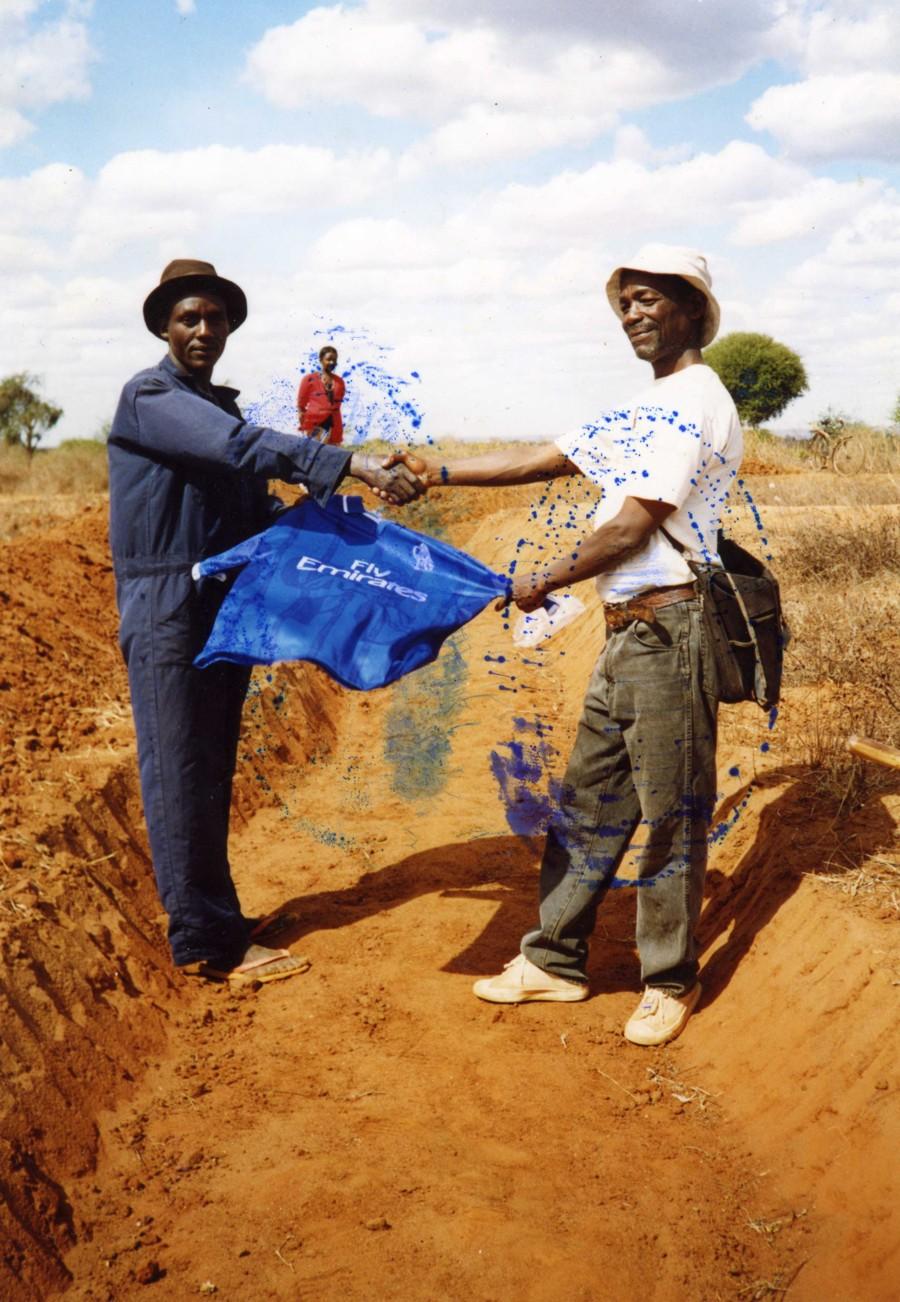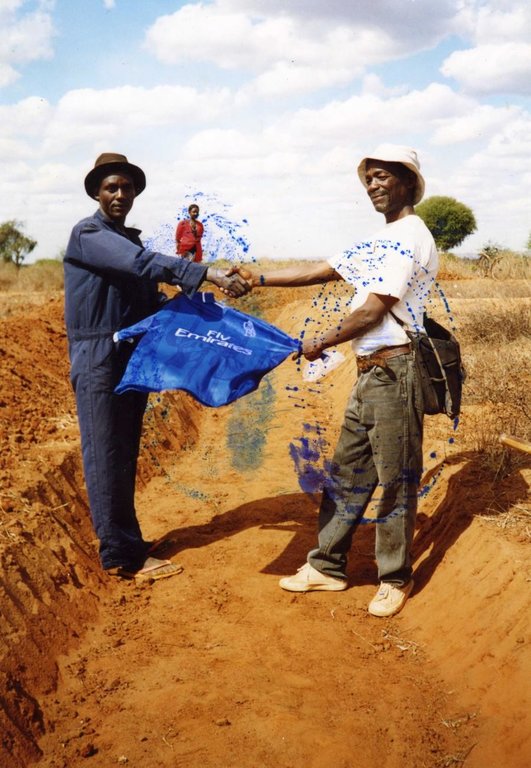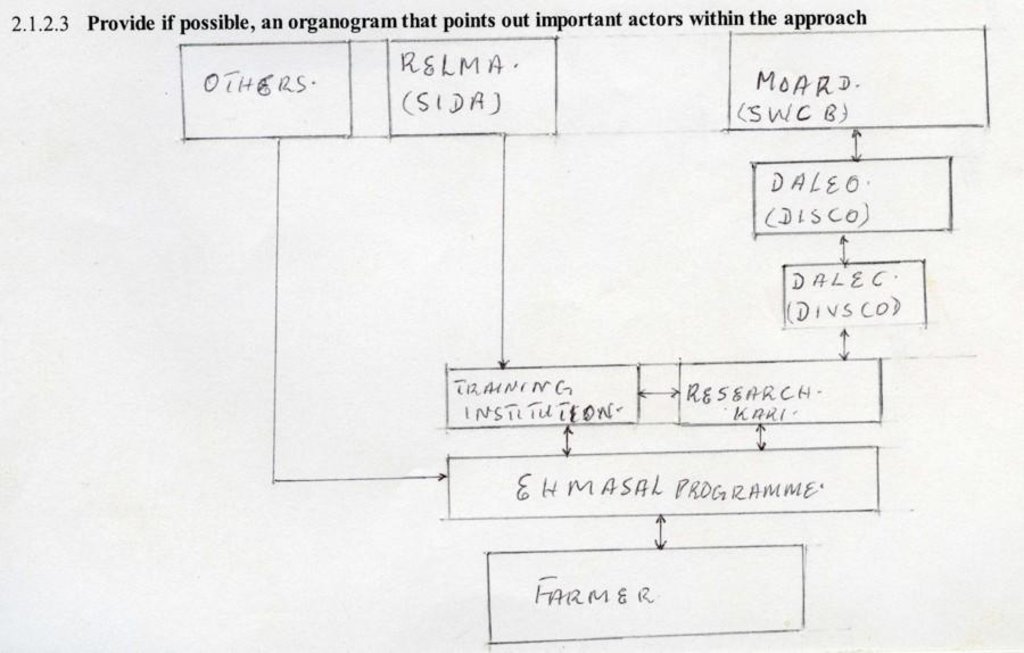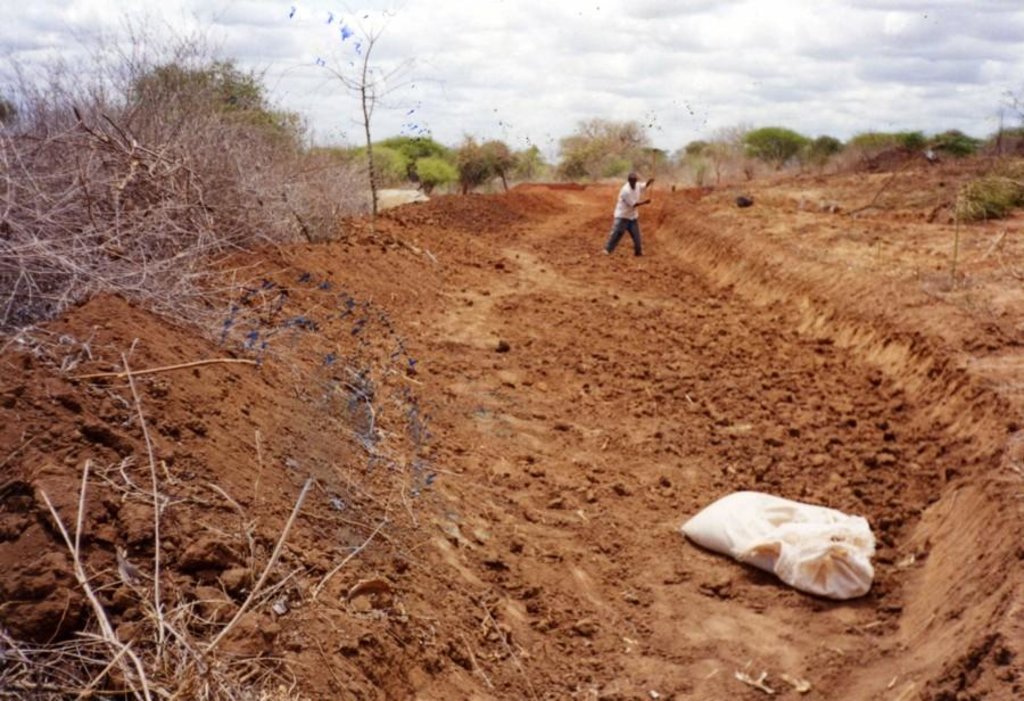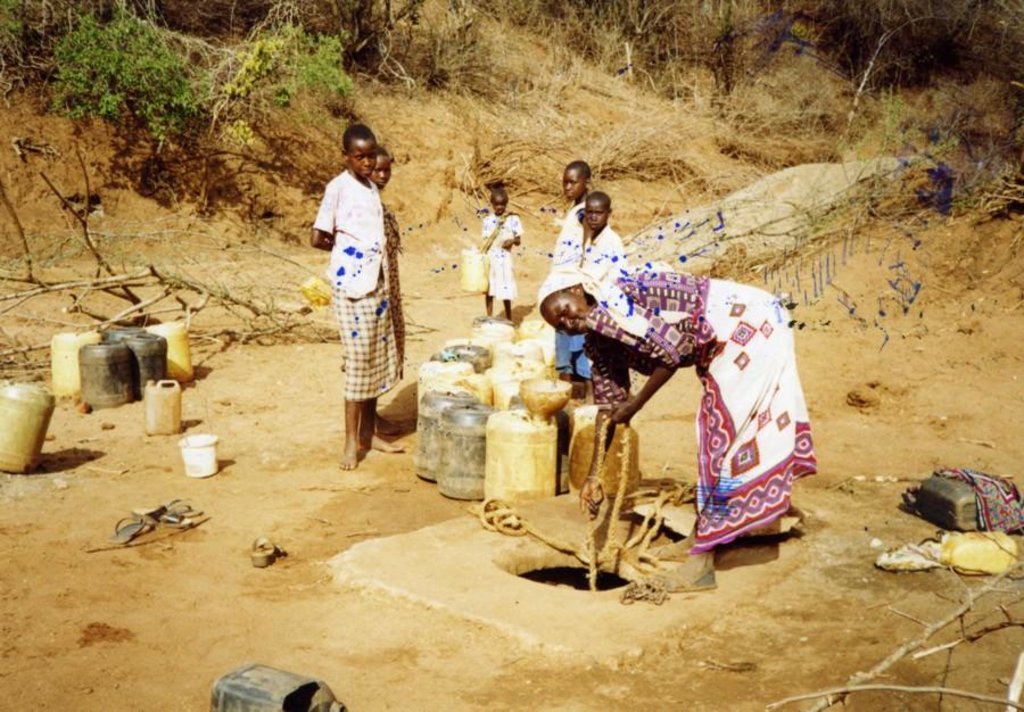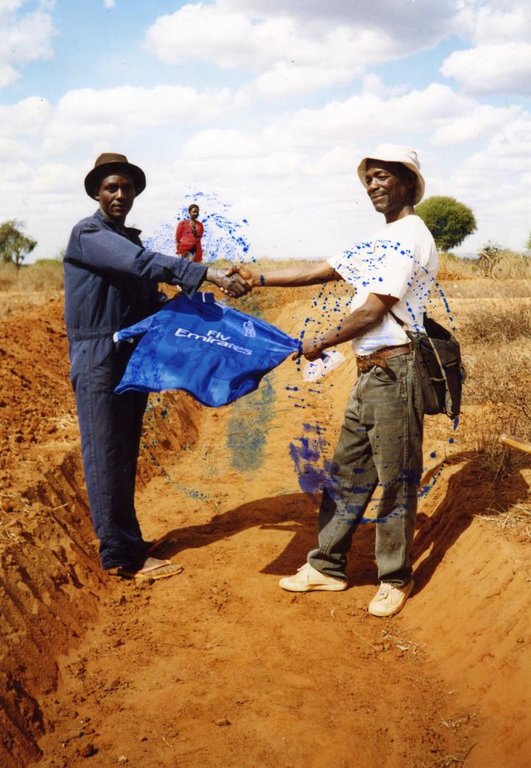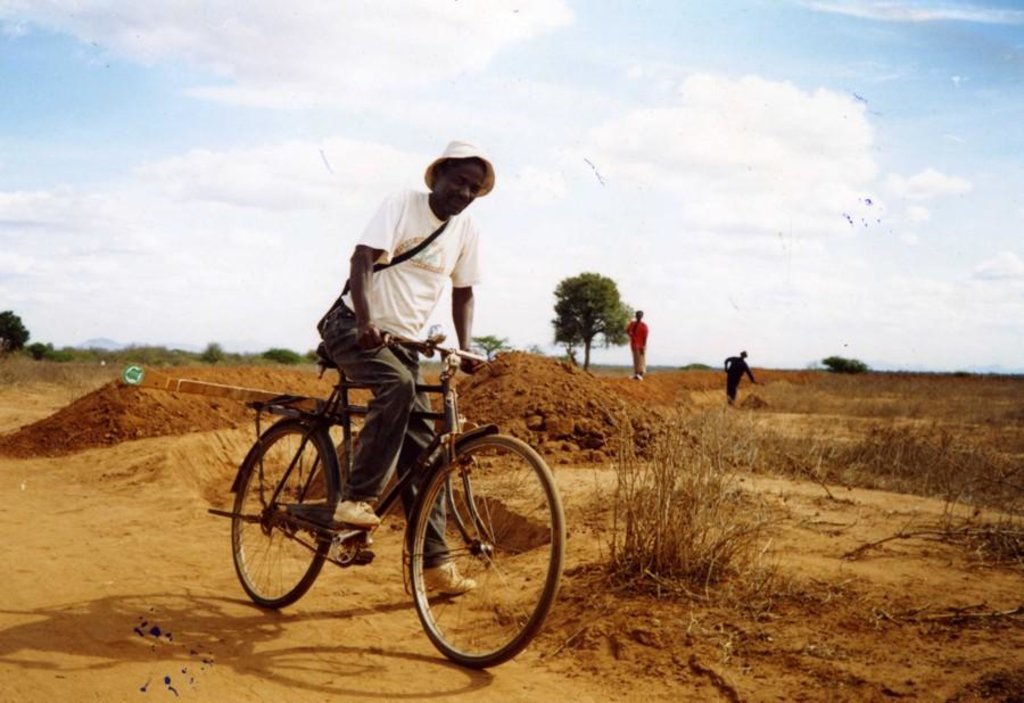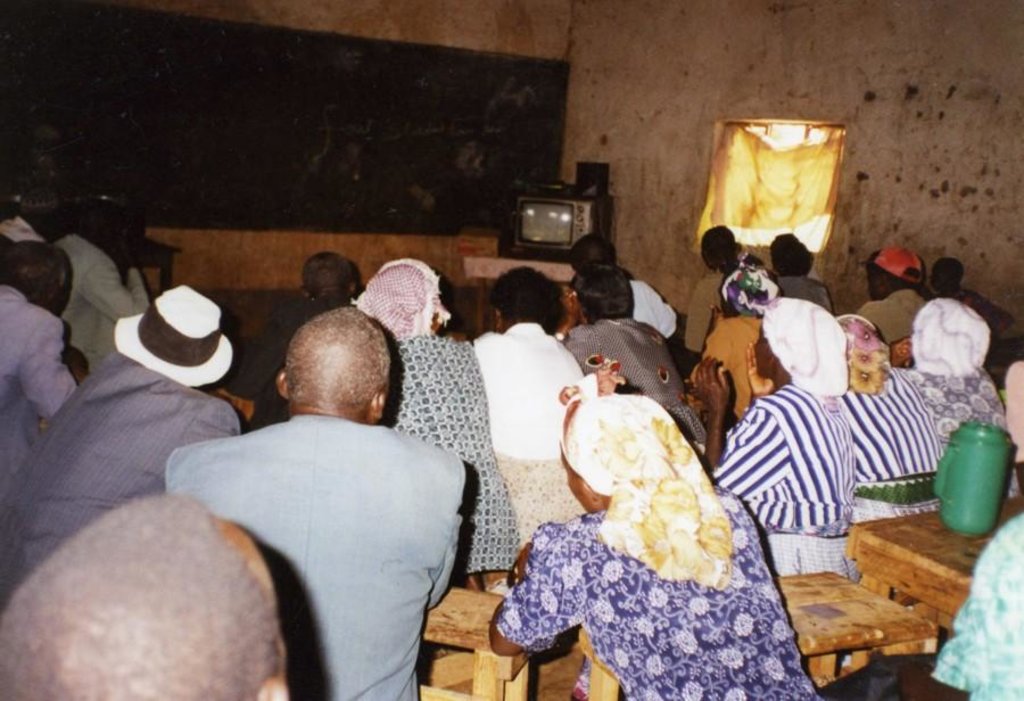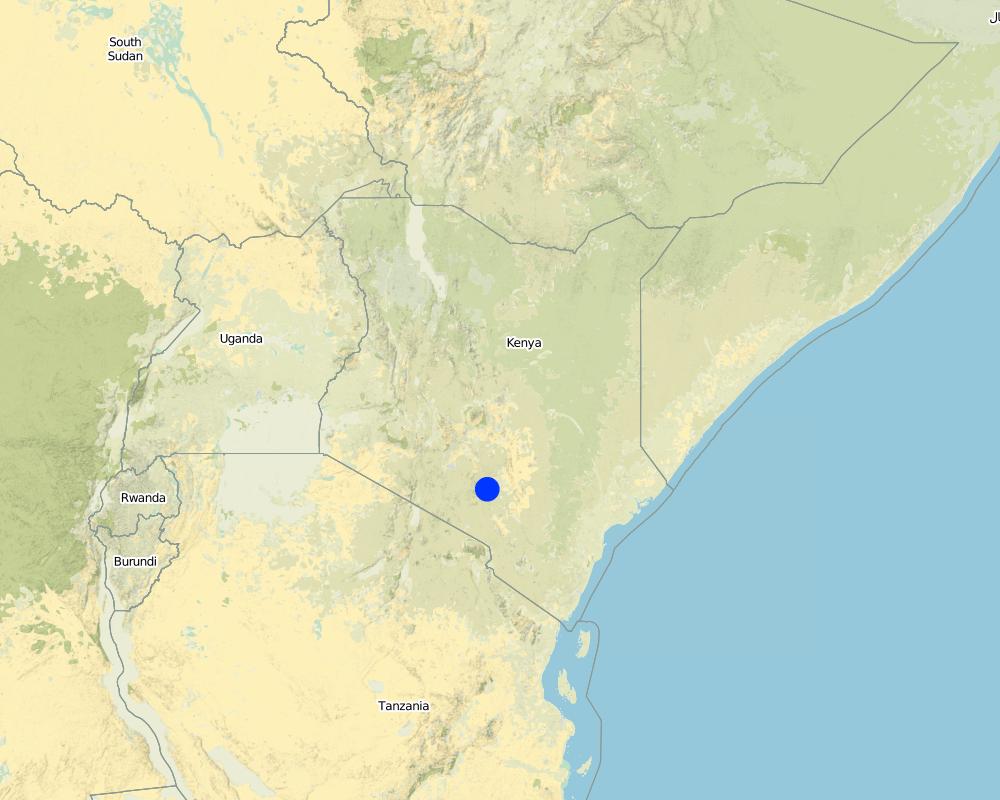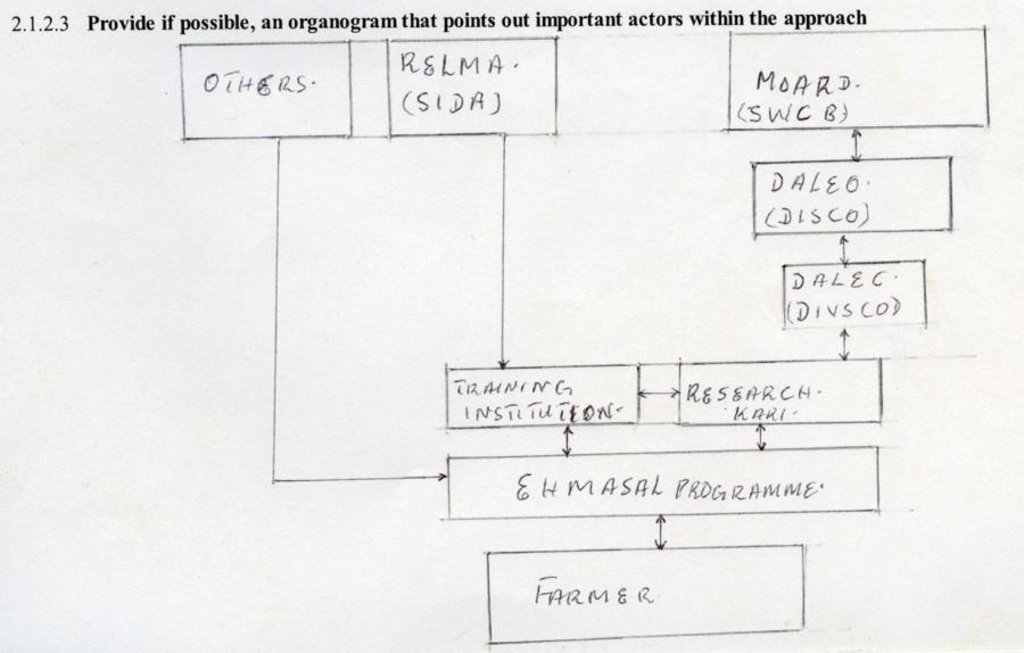water harvesting [Кения]
- Создание:
- Обновить:
- Составитель: Philippe Zahner
- Редактор: –
- Рецензент: Fabian Ottiger
approaches_2356 - Кения
Просмотреть разделы
Развернуть все Свернуть все1. Общая информация
1.2 Контактные данные специалистов и организаций, участвующих в описании и оценке Подхода
Специалист по УЗП:
Специалист по УЗП:
Mutunga Kathinji
Ministry of agriculture and rural development national SWC branch.
P.O.Box 30028 Nairobi
Кения
Специалист по УЗП:
Adual Alex R.
RELMA/SIDA ICRAF house
P.O.Box 63403 Nairobi
Кения
Название организации (-ий), содействовавших документированию/оценке Подхода (если применимо)
Swiss Agency for Development and Cooperation (DEZA / COSUDE / DDC / SDC) - ШвейцарияНазвание организации (-ий), содействовавших документированию/оценке Подхода (если применимо)
Ministry of Agriculture and Livestock Development of Kenya (MoA) - КенияНазвание организации (-ий), содействовавших документированию/оценке Подхода (если применимо)
International Centre for Research in Agroforestry (ICRAF) - Кения1.3 Условия, регламентирующие использование собранных ВОКАТ данных
Составитель и ответственный/-ые специалист(-ы) согласны с условиями, регламентирующими использование собранных ВОКАТ данных:
Да
1.4 Ссылка (-и) на Анкету (-ы) по Технологиям УЗП
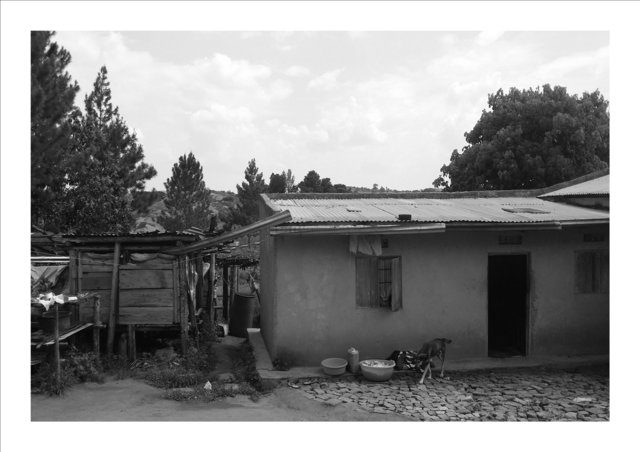
Wooden water reservoir for rain water harvesting. [Уганда]
A gutter system constructed on the farmer’s house-roof collects rainwater and directs it into a constructed reservoir raised off the ground with interior walls lined with water-proof tarpaulin. The reservoir has a maximum capacity of 8,000 liters of water; clean enough for irrigation, livestock and domestic use during seasons of …
- Составитель: Aine Amon
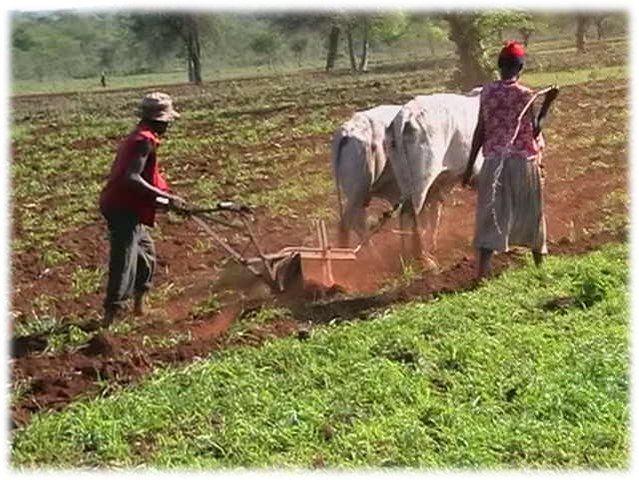
Micro-catchments for rainwater harvesting [Кения]
Ox-ploughed furrow micro-catchments are intentionally built as part of seedbed preparation to harvest rainwater. Commonly used in dryland environments, the micro-catchment prolong water availability for seed germination and growth and development of the emerging seedlings.
- Составитель: Kevin Mganga
2. Описание Подхода УЗП
2.1 Краткое описание Подхода
Water harvesting for agricultural production in ASALS.
2.2 Подробное описание Подхода
Подробное описание Подхода:
Aims / objectives: Water harvesting to enhance extra moisture and for reduced risks of crop failure. The technology combines retention/infiltration ditches, bench terraces, appropriate tillaging, manure use, water channels diverting run off from either high ways or natural waterways and stabilization of SWC embankment. Implementation is made by land users with guidance of SWC specialists. Land users may be a group or individual, though the land use type is individual ownership.
Other important information: Most of part 2: specification of SWC approach, QA2.11.3-QA2.5.2.3 were answered with assumptions since there never existed other projects in the area before this indigeneous one known as extra humid in arid and semi-arid lands (EHMASAL) programme established in 2000 to provide land users with the existing SWC technologies and methods of approaches to meet the prevailing need of self-sufficience and food security. The programme strategies are attached.
2.3 Фотографии, иллюстрирующие Подход
2.5 Страна/ регион/ место, где применялся Подход
Страна:
Кения
Административная единица (Район/Область):
Eastern province
Map
×2.6 Даты начала и окончания реализации Подхода
Год начала реализации:
2000
2.7 Тип Подхода
- в рамках проекта/ программы
2.8 Каковы цели/ задачи Подхода
The Approach focused mainly on SLM with other activities (Timeliness in planting/transplanting, seed selection, seedlings variety and breeds for the AEZ.)
To harvest runoff and spread it on cropped area to maximize agricultural productivity. To improve crop moisture requiremnet. To reduce risks of crop failure stimulated by aridity in ASALs. To control soil erosion by water and wind. To improve the inflitration rate. To enhance food security for self-sufficiency and reliance.
The SLM Approach addressed the following problems: Inadequency of soil moisture resulting to crop failure. Inefficiency of approach to improve the situation. Fertility depletion due to continuous cultivation. Soil crusting caused by erosion, poor tillaging, overgrazing and deforestation (degadation).
2.9 Условия содействующие применению Технологии/ Технологий в рамках Подхода или затрудняющие его
Наличие/ доступность финансовых ресурсов и услуг
- затрудняют
The much need be done on SWC in ASAL is beyond the sole land user for hand
Treatment through the SLM Approach: It requires financial support by source of loans and market orientation
Нормативно-правовая база (землевладение, права на земле- и водопользование)
- содействуют
The existing land ownership, land use rights / water rights greatly helped the approach implementation: Land ownership/land use rights help implementation of the approach since benefits are realized by the sole land user.
- затрудняют
No empowerment on land use law or bylaws
Treatment through the SLM Approach: Enforcement by legislation on land use policy.
Осведомленность в области УЗП, доступность технической поддержки
- затрудняют
poor land treatment-plans, poor land husbandry, low knowledge
Treatment through the SLM Approach: Interaction in land use change, especially with SWC specialists
3. Участие и распределение ролей заинтересованных сторон
3.1 Заинтересованные стороны, участвующие в реализации Подхода и их роли
- местные землепользователи/ местные сообщества
Land user/local SWC specialists. Working land users were work equally divided between men and women (The family leader organizes for activity implementation either family labour or casuals). Women are majority for reason that men are engaged on off-farm. Employmentproportion is about 3 women to 1 man. Mostly women in public meetings and open field days
- эксперты по УЗП/ сельскому хозяйству
- государственные власти (отвечающие за планирование или принятие решений)
Water harvest for agricultural production RESCU 1996. Run off farming ministry of agriculture, Nairobi
3.2 Участие местных землепользователей/ местных сообществ на разных стадиях реализации Подхода
| Участие местных землепользователей/ местных сообществ | Перечислите участников и опишите их вовлеченность | |
|---|---|---|
| инициирование/ мотивация | интерактивное | Mainly:public meetings; partly: workshops/seminars; public meetings for initial awareness. Workshops/seminars for technical assistance for approach |
| планирование | интерактивное | Mainly: workshops/seminars; partly: public meetings; innovators land users seminar |
| выполнение | самоорганизация | |
| мониторинг/ оценка | нет | Mainly: reporting; partly: measurements/observations; correct dimensions, monthly progress report |
| Research | нет |
3.3 Схема реализации (если имеется)
3.4 Принятие решений по выбору Технологии/ Технологий УЗП
Укажите, кто принимал решение по выбору применяемой Технологии/ Технологий:
- преимущественно специалисты по УЗП после консультаций с землепользователями
Поясните:
consultative for land use change
Decisions on the method of implementing the SLM Technology were made by mainly by land users supported by SLM specialists. land users implemented voluntarily.
4. Техническая поддержка, повышение компетенций и управление знаниями
4.1 Повышение компетенций/ обучение
Проводилось ли обучение землепользователей/ других заинтересованных лиц?
Да
Укажите, кто проходил обучение:
- землепользователи
- extensionists/trainers
Тип обучения:
- в ходе работы
- опытные участки
- общие собрания
Рассматриваемые темы:
Only field days and practical substitutes training for a fact that the programme has no source of finance to support trainings.
4.2 Консультационные услуги
Есть ли у землепользователей возможность получать консультации?
Да
Описание/ комментарий:
Runoff farming (water harvesting); Key elements: Infiltration/retention ditches, level bench terraces, soil structure, texture and fertility improvement, macro/micro catchment water harvest bund; 1) Advisory service was carried out through: non-governmental agency 2) Target groups for extension: land users; Activities: SWC activities, water harvest
Advisory service is inadequate to ensure the continuation of land conservation activities; Staff farmer ratio is too high to induce land use change
4.3 Институциональная (организационная) поддержка
В ходе реализации Подхода были ли организованы новые институциональные структуры или поддержаны уже существующие?
- да, немного
Укажите уровень, на котором структуры были укреплены или вновь созданы:
- местные
Укажите тип поддержки:
- повышение компетенций/ обучение
4.4 Мониторинг и оценка
Являются ли мониторинг и оценка частью Подхода?
Да
Комментарии:
Area treated aspects were regular monitored through measurements
no. of land users involved aspects were ad hoc monitored through observations
There were no changes in the Approach as a result of monitoring and evaluation: The changes may come up season after season due to rainfall characteristics in arid areas. The period is rather short to make a conclusion. No change observed hither to.
4.5 Научные исследования
Были ли научные исследования частью Подхода?
Да
Укажите темы исследований:
- экология
- технология
Напишите подробнее и назовите тех, кто выполнял исследования:
The existing SWC recommendations were released through the institution
Research was carried out both on station and on-farm
5. Финансирование и внешняя материальная поддержка
5.1 Годовой бюджет мероприятий по УЗП в рамках Подхода
Если точный годовой бюжет неизвестен, укажите примерный диапазон затрат:
- 10000-100000
Комментарий (например, основные источники финансирования/ ключевые доноры):
Approach costs were met by the following donors: local community / land user(s) (no external support)
5.3 Субсидии на отдельные затраты (включая оплату труда)
Если труд землепользователя был существенным вкладом, укажите, был ли этот вклад:
- добровольный
5.4 Кредитование
Предоставлялись ли в рамках Подхода кредиты на мероприятия УЗП?
Нет
6. Анализ влияния и заключительные положения
6.1 Влияние Подхода
Сумел ли Подход помочь землепользователям внедрить и поддерживать технологии УЗП?
- Нет
- Да, немного
- Да, умеренно
- Да, существенно
soil management structurally aiming to make use of previously lost runoff for crop production.
Сумел ли Подход разрешить правовые проблемы землевладения/ землепользования, препятствующие использованию технологий УЗП?
- Нет
- Да, немного
- Да, умеренно
- Да, существенно
Did other land users / projects adopt the Approach?
- Нет
- Да, немного
- Да, умеренно
- Да, существенно
about 20-25% of the other organized groups adopted the approach initially.
6.3 Долгосрочная устойчивость мероприятий в рамках Подхода
Могут ли землепользователи самостоятельно (без внешней поддержки) продолжать применение того, что было реализовано в рамках Подхода?
- да
Если да, опишите как:
About 75% of the land users may continue implementing the SWC activities without financial support in future. What would be required by land user as focused is layout, alignment, generally technology guidance. If other approaches e.g. trainings/seminars were included to all farm production systems.
6.4 Сильные стороны/ преимущества Подхода
| Сильные стороны/ преимущества/ возможности по мнению землепользователей |
|---|
| increase weight on food security (How to sustain/ enhance this strength: to acquire knowledge of the land husbandry.) |
| introduces off-farm employment (How to sustain/ enhance this strength: proper measures and practices of water harvesting component.) |
| Сильные стороны/ преимущества/ возможности по мнению составителя или других ключевых специалистов |
|---|
| The approach focuses on food security and self-sufficiency. (How to sustain/ enhance this strength: Regular maintenance of the SWC structures and agroforestry establishment.) |
| Improve the standard of living if adopted by the community. (How to sustain/ enhance this strength: Enforcement of SWC policy by the government to protect technology areas.) |
| Reduces risk of crop failure due to poor rainfall distribution. (How to sustain/ enhance this strength: Introduce policy of land use right/land ownership.) |
| Reduces soil and water losses through erosion. (How to sustain/ enhance this strength: Introduced land use change and land management (land husbandry practices)) |
| Improves national economy as well as family gross income. (How to sustain/ enhance this strength: improvement on market of agricultural products and by-products.) |
6.5 Слабые стороны/ недостатки Подхода и пути их преодоления
| Слабые стороны/ недостатки/ риски по мнению землепользователей | Возможные пути их преодоления/снижения? |
|---|---|
| poor marketing system for most of agricultural products and byproducts. | formation of cooperative societies |
| slow in adoption on land use change due to longer period of cost return | government introduces enforcement law to discourage communal land use. |
| Слабые стороны/ недостатки/ риски по мнению составителя или ответственных специалистов | Возможные пути их преодоления/снижения? |
|---|---|
| regular crop failure due to erratic rainfall patterns | enhance extra moisture by water harvest and spreading it in cropped area |
| consumes time, energy and money to establish. | No soil, no food. No water, no life. Policy of approach |
| interferes with soil fertility and reduces land size by SWC structures. | Manure and fertilizer application regularly to maximize production level. |
| Slow in cost benefit return from a given area. | marketing orientation for farm products |
| Low income sources of the common land users. | Introduced sources of agricultural loan policy for ASALs. |
7. Справочные материалы и ссылки
7.2 Ссылки на опубликованные материалы
Название, автор, год публикации, ISBN:
SWC manual for Kenya 1997 by D.B. ThomasSoil conservation in Kenya 1981 by C.G.WennerSWC technology development in Kenya by K:MutungaSony super DXE-180 videoThe sun will still rise videoRunoff, a friend or a foe video
Где опубликовано? Стоимость?
agricultiral information centre, freeagricultiral information centre, freeM.A.R.D. SWCB-NBI Kenya, freeSWCB NBI Kenya, freeRELMA/CIDA, freeRELMA/CIDA, free
Название, автор, год публикации, ISBN:
Rainfall runoff analysis by Paul Kimeu. 1-11. Feb. 1998
Название, автор, год публикации, ISBN:
Water conservation, water harvesting and management (WCHM) scheme design. Practicals (WHIF) exercise. Embu February 1-11 1998
Название, автор, год публикации, ISBN:
Method of collecting and storing local surface runoff for water supply in central Asian deserts by Prof A.G. Babaer
Где опубликовано? Стоимость?
Desert research institute, Gogolstr.15.
Название, автор, год публикации, ISBN:
Study of traditional water harvesting practices in Cost province, by J.O.Owupo, July 1998
Название, автор, год публикации, ISBN:
Soil characteristics and properties for water conservation, harvesting and management (WCHM). (WH5) June 29-July 7 1997 by Kithinji Mutunga
Название, автор, год публикации, ISBN:
Dryland water harvesting (WH), water conservtion (WC) techniques , by K. Mutunga 9-15 July 1995
Название, автор, год публикации, ISBN:
Design procedure for harvesting and conservation system, by Odoyo J. Bittar. ministry of agriculture, Busia-Kenya, February 1-11, 1998
Название, автор, год публикации, ISBN:
MINOR ROADS PROGRAMME soil conservation. Pilot project final report 1992agrisystems (EA) Ltd, P.O.Box 39636 Nairobi, free
Где опубликовано? Стоимость?
Agrisystems (EA) Ltd, P.O.Box 39636 Nairobi, free
Название, автор, год публикации, ISBN:
promoting farmer innovatiion . Workshop report No. 2 by Will Critchley 'RELMA' 1999
Где опубликовано? Стоимость?
Free
Название, автор, год публикации, ISBN:
mpact assessment study. National soil and water conservation branch, final report 1998
Где опубликовано? Стоимость?
Agrisystems (EA) Ltd, P.O.Box 39636 Nairobi, free
Название, автор, год публикации, ISBN:
The sustainability of the catchment approach - induced measures and activities, by Yeraswara Admasie (NSWCP). Report in 1998
Где опубликовано? Стоимость?
Free
Название, автор, год публикации, ISBN:
Where ther is no water. SASOL and by Donald B.Thomas 1999. maji na ufanisi P.O.Box 14893 Nairobi
Где опубликовано? Стоимость?
Free
Название, автор, год публикации, ISBN:
ater from sand rivers by Erik Nissen Petersen report No.23, RELMA/SIDA. Kenya 2000
Название, автор, год публикации, ISBN:
Agroforestry extension manual for northern Zambia, by Henry Chilufya. BO Tengrias , free. RSCU Nairobi technical handbook No.11.
Название, автор, год публикации, ISBN:
The hand of man. Soil conservation in Kondoa, eroded area Tanzania, by Carl Christiansson, Alfred Mbegu, Andreas Yrgard, RSCU/SIDA 1993 free
Название, автор, год публикации, ISBN:
Nomadic pastoral appraisal SWCB MALDM P.O. Box 30028 Nairobi, by L.I. Mwarasomba
Название, автор, год публикации, ISBN:
Curriculum for in service training in agroforestry and related subjects in Kenya. By Stachys M. Muturi. M.A., MENR, Kenya. Forestry research institute, RSCU/SIDA 1992
Ссылки и модули
Развернуть все Свернуть всеСсылки

Wooden water reservoir for rain water harvesting. [Уганда]
A gutter system constructed on the farmer’s house-roof collects rainwater and directs it into a constructed reservoir raised off the ground with interior walls lined with water-proof tarpaulin. The reservoir has a maximum capacity of 8,000 liters of water; clean enough for irrigation, livestock and domestic use during seasons of …
- Составитель: Aine Amon

Micro-catchments for rainwater harvesting [Кения]
Ox-ploughed furrow micro-catchments are intentionally built as part of seedbed preparation to harvest rainwater. Commonly used in dryland environments, the micro-catchment prolong water availability for seed germination and growth and development of the emerging seedlings.
- Составитель: Kevin Mganga
Модули
Нет модулей


